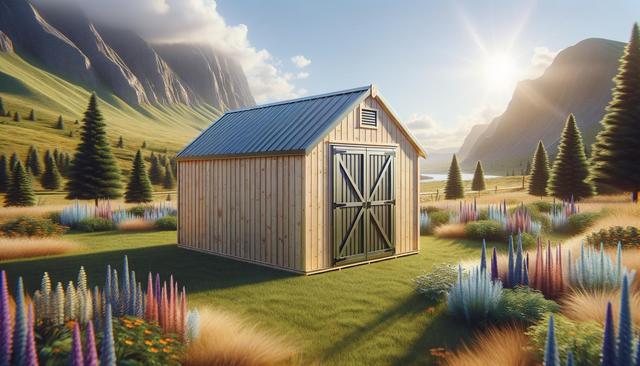
A Practical Guide to Metal Storage Sheds for Your Outdoor Space
Determining the Right Size for Your Needs
Before purchasing a metal storage shed, it’s essential to evaluate your storage requirements. Start by assessing what items you plan to store—whether garden tools, outdoor furniture, seasonal decorations, or even bicycles. These considerations help determine the size of shed that will accommodate your belongings without overcrowding the space. A small shed may suffice for hand tools and supplies, while a larger structure is better suited for lawn equipment or workshop areas.
Here are some general size guidelines to help with your decision:
- Small (up to 6×4 feet): Ideal for basic tools and supplies
- Medium (8×6 to 10×8 feet): Suitable for lawnmowers, bikes, and garden equipment
- Large (12×10 feet and above): Best for multi-purpose use or as a workspace
Also, consider the available space in your yard. Ensure there’s enough clearance around the shed for ventilation and access, and check local regulations or HOA rules that may affect shed placement.
Choosing the Right Design and Features
Metal storage sheds come in a variety of designs, allowing you to select a model that complements the aesthetic of your outdoor space while fulfilling practical needs. Consider roof style, door type, and ventilation features when making your choice. Common roof designs include gable, pent, and flat roofs. Gable roofs offer extra height and storage space, while pent roofs are suitable for placing against walls or fences.
Features to look for in a well-designed shed include:
- Double doors for easy access
- Built-in ventilation to prevent moisture buildup
- Lockable doors for added security
- Windows or skylights for natural light
Some sheds also offer modular sections or customization options, such as adding shelving systems or tool hooks. These additions can greatly enhance the shed’s usability and organization.
Understanding Material Quality and Durability
One of the main advantages of metal storage sheds is their resistance to pests, fire, and weather elements. However, not all metal sheds are created equal. Look into the type of metal used—galvanized steel is a common and reliable option due to its corrosion resistance. Aluminum sheds are lighter, which may be easier for installation but could be less sturdy in high-wind areas.
Ensure that the shed has a protective coating or paint that resists rust and UV damage. Powder-coated finishes are particularly effective in extending the shed’s lifespan. Reinforced corners and panels also contribute to the structural integrity, especially in regions prone to harsh weather.
When comparing models, check the thickness of the panels and frames. Thicker materials generally offer better durability and security. While metal sheds require less maintenance compared to wood, investing in higher-quality materials upfront can save costs in the long term by reducing the need for repairs or replacements.
Security and Maintenance Considerations
Security is a key factor when storing valuable equipment in a metal shed. Many models come with lockable doors, but for added peace of mind, consider upgrading to a heavy-duty padlock or installing a hasp latch with a tamper-resistant design. Some sheds are also compatible with security lighting or alarm systems.
While metal sheds are low-maintenance, periodic upkeep helps ensure longevity. Here are a few maintenance tips:
- Inspect the structure every few months for signs of rust or damage
- Clean the exterior with mild soap and water to remove dirt and debris
- Repaint or touch up any scratched areas to prevent corrosion
- Check the roof and floor for leaks or water pooling
Proper foundation setup also plays a role in reducing wear and tear. A level base made from concrete or treated wood can prevent moisture issues and keep the shed stable over time.
Installation and Placement Tips
Installing a metal storage shed can be a straightforward process, especially with prefabricated kits. However, careful planning ensures smoother assembly and long-term performance. Most sheds come with detailed instructions, but having a second pair of hands and the right tools will make the task easier.
When selecting a placement area, keep the following in mind:
- Choose a flat, well-drained area away from trees or overhanging branches
- Ensure the shed is easily accessible but doesn’t obstruct pathways or views
- Consider sunlight exposure to prevent dampness and mold
- Leave space around the structure for maintenance access
Some homeowners opt to anchor their sheds to the ground, especially in windy areas. This adds stability and reduces the risk of shifting or tipping during storms. Local building codes may also require anchoring or permits for larger sheds, so it’s worth checking with your municipality before installation begins.


